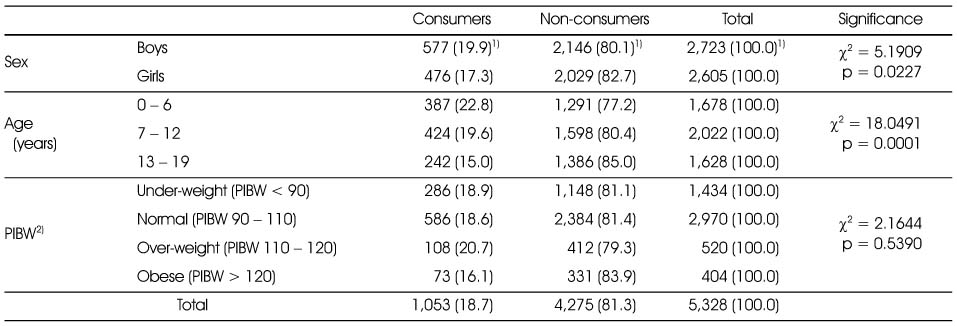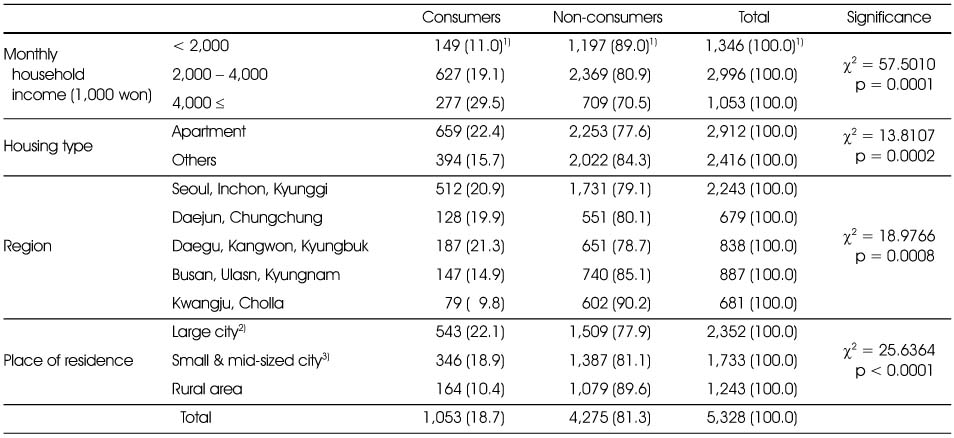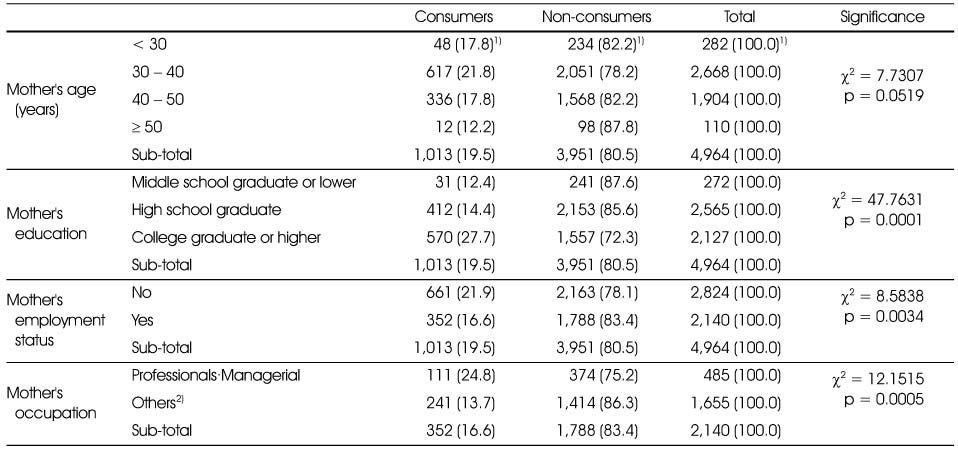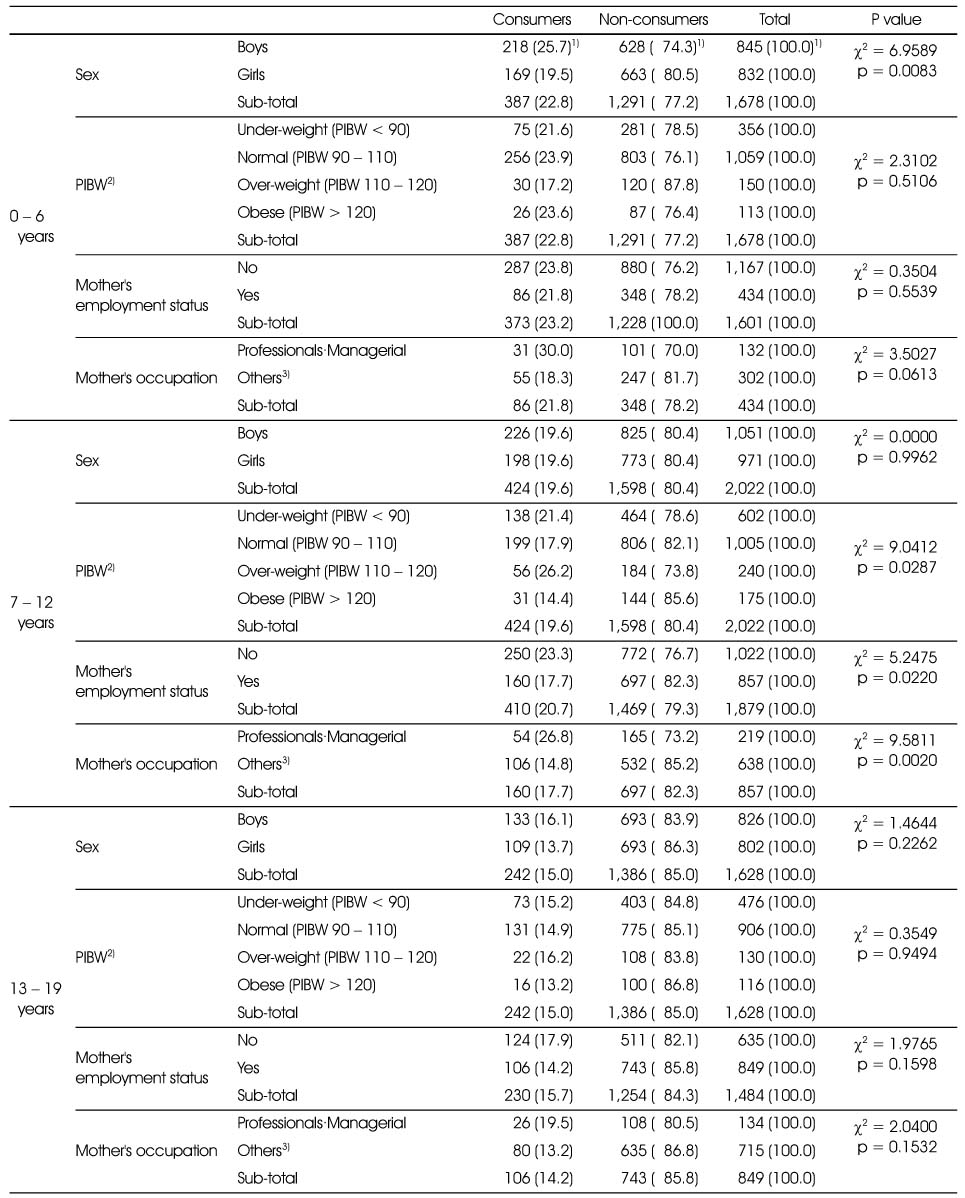Influencing Factors on the Dietary supplements Consumption among Children in Korea
Article information
Abstract
With a recent increase in dietary supplements (DS) consumption among children in Korea, this study was performed to examine the influencing factors on children's DS consumption. A nationwide survey was conducted employing 3 representative samples of children for summer & fall of 2008 and spring of 2009 by stratified multistage sampling of 120 survey sites per season based on the 2005 census population. Approximately 30 households from each survey site were screened for residing children of 0-19 years and about 1,700 households remained as eligible samples per season. Trained dietitians visited households to perform face-to-face interview to children and/or parents regarding DS consumption including health functional foods (HFF), vitamins/minerals (V/M) supplements and other food supplements during 1 month prior to interview. Out of 5,328 children responded, 18.7% reported DS consumption. Consumption rate was higher in boys (19.9% vs. 17.3% in girls, P < 0.05) and youngsters (22.8% compared to 15.0% in adolescents, P < 0.001). Children from higher income family (P < 0.001), those living in apartments (P < 0.001), those residing in metropolitan area (P < 0.001), and those of mothers with higher education (P < 0.001) were more likely to take DS. Also, mother's employment status and occupation were significantly associated with children's DS consumption. The most popular DS was HFF (72.1%), which was consumed more in children of higher income family. It is revealed that socioeconomic factors affect children's DS consumption significantly. Also it is necessary to estimate children's V/M intake from DS and foods together especially because there are tolerable upper limits set for V/M for safety purposes.
Notes
This research was supported by grants 08082KFDA999 from KFDA in 2008-9










